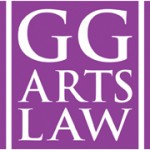By Brian Taylor Goldstein, Esq.
Dear Law and Disorder:
We are in production of a new “Tribute” show with a video component. We are grappling with what type of media is public domain or where public domain photos or video can be found. None of the video production companies seem to have a definitive answer. I have been searching for pertinent federal statute that address this issue. Any thoughts?
There’s an old joke where a man encounters another man frantically searching for something in the middle of the street. The first man asks: “What are you looking for?” The second man replies: “My keys. I lost them in the dark alley over there.” “Then why are you looking for them out in the street?” “Because the light is better out here!” Ba da boom.
Like the man in the street, you’re looking for the right thing, but in the wrong place. There is no federal statute that addresses your issue…at least, not directly. If you’re producing a “tribute” show with a video component, then any copyrighted material you want to include in your video will need to be licensed. Any material that is not protected by copyright is in the public domain and is free to use. The question you need to ask then is: how do you tell if material is still protected by copyright? The federal copyright statute will give you a formula, but not the answer. The answer depends on when the copyrighted material was first published. Most often, copyright lasts for the life of the owner plus 70 years. But who is the owner?
The challenge with videos is that you are often dealing with multiple copyrights with multiple owners. Let’s say, for example, that you want to include a video of the original artist (since this is a “tribute” show) performing at a concert recorded in the 1960s. There is a copyright in the video itself as well as a copyright in the music being performed on the video. So, even if you were to determine that the video is in the public domain, the music being performed may still be protected by copyright—or vice versa. We once had an orchestra contact us about creating a DVD to celebrate their 50th anniversary using old video clips from past concerts. Not only did we (well, to be fair, Robyn!) have to obtain licenses from publishers of certain contemporary works (as well as arrangements of older works), but we needed to obtain licenses from some of the original videographers who still owned the rights to the video footage. (Side note: ALWAYS take the time to get a written license or assignment from anyone whom you hire to photograph or videotape your or your performance—even volunteers!)
Photographs are similar. In every photograph are two sets of rights: the rights to the photograph itself (ie: the negative) and the person being photographed. The photograph itself may be owned by the photographer, but the photographer may or may not own or control the rights to the image or person in the photograph. While a person does not have a “copyright” in his or her own image, they do own rights of publicity, rights of endorsement, etc. So, for example, if you wanted to use a photograph of the famous artist you are paying “tribute” to, you would need to determine whether or not the photograph itself was in the public domain and whether or not you required any publicity or endorsement rights to use the image of the artist. (To make matters even worse, publicity and endorsement rights are controlled by state, not federal law, and can vary from state to state.)
Determining whether or not a photograph is the public domain is just like determining whether or not a video is in the public domain: when was it made? Who made it? Are they dead or alive? Even if the photograph or video is in the public domain, you still need to do a separate analysis of the contents or images on the photograph or video.
While we’re on the topic of “tribute” shows, its also worth mentioning that even if you are lucky enough to find all the videos and photographs you want, as well as the contents thereof, in the public domain, you still need to be wary of using the name and image of the original artist in the marketing and publicity materials of your tribute show. Things like names and even visual elements such as distinctive costumes or a physical characteristic of the original artist can trigger trademark issues that are entirely different from copyright and other rights. The good news is that with enough advance planning and thoughtful analysis, its entirely possible to create the type of video component you want. Many artists and producers successfully do this all the time, often with the blessing of the original artist.
__________________________________________________________________
For additional information and resources on this and other legal and business issues for the performing arts, visit ggartslaw.com
legal and business issues for the performing arts, visit ggartslaw.com
To ask your own question, write to lawanddisorder@musicalamerica.org.
All questions on any topic related to legal and business issues will be welcome. However, please post only general questions or hypotheticals. GG Arts Law reserves the right to alter, edit or, amend questions to focus on specific issues or to avoid names, circumstances, or any information that could be used to identify or embarrass a specific individual or organization. All questions will be posted anonymously and/or posthumously.
__________________________________________________________________
THE OFFICIAL DISCLAIMER:
THIS IS NOT LEGAL ADVICE!
The purpose of this blog is to provide general advice and guidance, not legal advice. Please consult with an attorney familiar with your specific circumstances, facts, challenges, medications, psychiatric disorders, past-lives, karmic debt, and anything else that may impact your situation before drawing any conclusions, deciding upon a course of action, sending a nasty email, filing a lawsuit, or doing anything rash!
